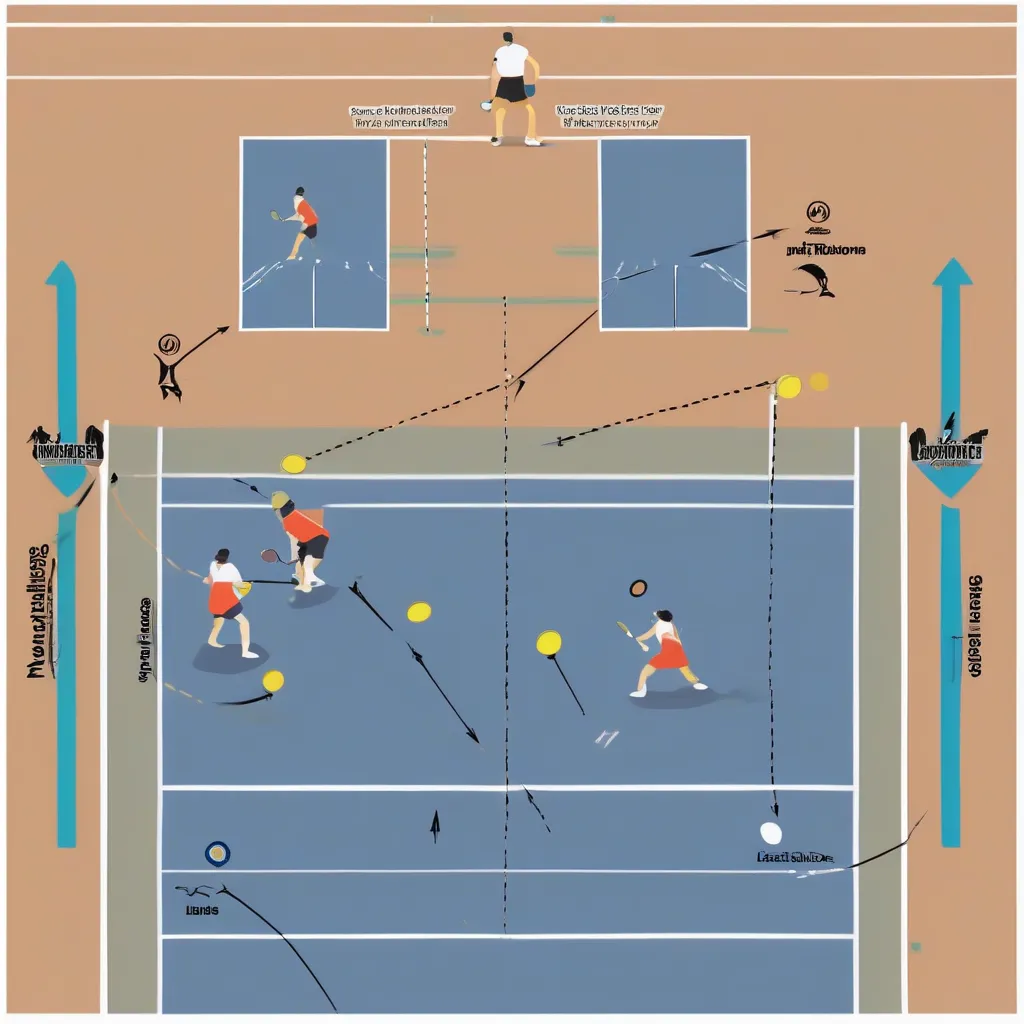Table of Contents
Pickleball Stacking Strategy: Introduction to Enhanced Team Play
Pickleball stacking strategy is an advanced technique used primarily in doubles play to optimize player positioning and capitalize on each player’s strengths. By using stacking, teams can maintain advantageous court positions and create strategic opportunities. This guide covers the essentials of pickleball stacking strategy, including tips for effective positioning, communication, and play.
Why Stacking Strategy is Important in Pickleball
Implementing a stacking strategy offers several benefits for doubles teams:
- Optimized Positioning: Allows players to start in their preferred positions, enhancing their strengths.
- Increased Efficiency: Reduces unnecessary movement, saving energy and maintaining focus.
- Strategic Advantage: Creates opportunities to exploit opponents’ weaknesses.
- Enhanced Communication: Promotes better teamwork and coordination.
Basics of Pickleball Stacking Strategy
Stacking involves both players starting on the same side of the court, then moving into their preferred positions after the serve. Here’s how it works:
 Pickleball Stacking Strategy
Pickleball Stacking Strategy
1. The Serve
The serving team positions both players on the same side of the court. The non-serving player crouches or stands to the side to avoid interference.
2. The Return
The receiving team also stacks, positioning both players on the same side. After the return, both players move into their optimal positions.
3. Switching Positions
After the serve or return, players quickly switch to their preferred sides. Effective communication and quick movement are crucial to avoid confusion and gaps in coverage.
Top Tips for Effective Pickleball Stacking
1. Communicate Clearly
Clear communication is essential for successful stacking. Use verbal cues and hand signals to coordinate movements and avoid collisions.
2. Practice Switching
Regularly practice switching positions with your partner to improve speed and coordination. Drills focusing on rapid movement and seamless transitions are beneficial.
3. Know Your Roles
Understand each player’s strengths and weaknesses. Position the stronger player in a role that maximizes their effectiveness, whether at the net or baseline.
4. Stay Balanced
Ensure that both players maintain balance during switches. Avoid over-committing to one side, which can leave the court open for opponent attacks.
5. Adapt to Opponents
Adjust your stacking strategy based on your opponents’ play style. Be flexible and ready to change tactics if your initial strategy isn’t effective.
6. Maintain Court Awareness
Always be aware of your position relative to your partner and the court. Good awareness helps in maintaining effective coverage and responding to opponents’ shots.
Common Mistakes in Pickleball Stacking
Avoid these common mistakes to improve your stacking strategy:
1. Poor Communication
Miscommunication can lead to collisions and missed shots. Always use clear signals and maintain constant communication with your partner.
2. Slow Transitions
Slow switching can leave gaps in your defense. Practice quick, efficient movements to ensure seamless transitions.
3. Overstacking
Over-relying on stacking can make your strategy predictable. Mix up your positioning to keep opponents guessing.
4. Ignoring Weaknesses
Failing to address your team’s weaknesses can undermine your stacking strategy. Work on improving weak areas to create a more balanced and effective approach.
5. Inconsistent Practice
Inconsistent practice can lead to poor execution during matches. Regularly practice your stacking strategy to build confidence and proficiency.
Advanced Stacking Techniques
1. Reverse Stacking
Reverse stacking involves starting in a non-traditional formation to confuse opponents. This can be particularly effective against teams familiar with your standard stacking strategy.
2. Poaching
Poaching is when one player crosses the center line to intercept a shot. This aggressive move can disrupt opponents’ rhythm but requires excellent coordination and timing.
3. Fake Stacking
Fake stacking involves pretending to stack but then reverting to traditional positions. This can throw off opponents and create openings for attacking shots.
Resources for Further Learning
For more detailed information on pickleball stacking strategy and improving your game, explore these valuable resources:
- Visit the USA Pickleball Association (USAPA) for comprehensive guides and official rules.
- Explore instructional videos and articles on Pickleball Central.
- Check out detailed reviews and tutorials on Pickleball Portal.
- Learn from top players and coaches on PickleballMAX.
Conclusion
Mastering the pickleball stacking strategy can significantly enhance your doubles play, providing better positioning, improved communication, and strategic advantages. By practicing the tips and techniques outlined in this guide, you can elevate your game and achieve greater success on the court. Use these strategies to perfect your stacking approach and dominate your opponents.
Frequently Asked Questions
- What is stacking in pickleball? Stacking is a strategy in doubles where both players start on the same side of the court, then switch to their preferred positions after the serve or return.
- Why is stacking beneficial in pickleball? Stacking optimizes player positioning, enhances strengths, improves communication, and creates strategic opportunities.
- How can I improve my stacking strategy? Improve your stacking strategy by practicing clear communication, quick transitions, understanding roles, maintaining balance, adapting to opponents, and ensuring court awareness.
- What are common mistakes to avoid in stacking? Common mistakes include poor communication, slow transitions, overstacking, ignoring weaknesses, and inconsistent practice.
- Where can I learn more about pickleball stacking strategy? Explore resources like the USA Pickleball Association, Pickleball Central, Pickleball Portal, and PickleballMAX for comprehensive guides and tutorials on stacking strategy.